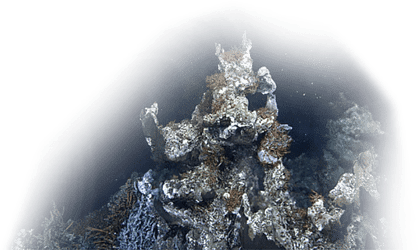
Visiting scientist Connie Lovejoy, a professor from the Université Laval in Quebec City and an international leader in polar research, is a marine microbiologist whose research is helping understand how microscopic plankton—the base of the food chain in the Arctic Ocean—are influenced by ocean temperature and salinity, and how they will respond to diminishing sea-ice conditions.
At ONC from 26 April until June 2018, Connie will be reviewing data from ONC’s Cambridge Bay observatory, and planning the 2019 deployment of an automated DNA sampler that will be connected to the instrument platform.
Ocean Networks Canada: You are a marine biologist who studies microscopic plankton. What interested you in this field?
Connie Lovejoy: “I have been interested in microscopic things since I can remember. When I was in Grade 5, I asked for and got a small microscope for Christmas. As an undergraduate at the University of California-Davis, I had a job counting phytoplankton samples from Lake Tahoe, identifying the many shapes and forms within the puzzle, and trying to understand where and when the species occurred—an experience that has stayed with me. Then the first time I went to sea, I turned into an oceanographer. I do not understand why everyone doesn’t want to be a microbial oceanographer.”
ONC: You have done extensive science in the Arctic, and are considered an international leader in polar research. What is the biggest highlight from your past studies?
CL: “The highlight of my work is the way physical oceanography and planktonic microbial species distributions fit so well together. Water masses from different depths retain the same microbial species over vast distances. The use of molecular markers to identify phytoplankton and other protists has enabled my research group to track species using DNA, and match this with physical oceanographic data over large distances and through time. When there are exceptions to the close coupling between water masses and the taxa identified using DNA, it seems to be related to the dynamics of the system. Our current work using much more time sensitive RNA [ribonucleic acid] as a marker is helping to resolve such exceptions. Our other work with algal isolates and genomes is providing the data to generate insight into how the different species are adapted to their associated water mass of origin.”
ONC: At ONC, you will be reviewing data from Cambridge Bay in Nunavut. How does ONC technology enable this research?
CL: “Right now, we have molecular data from the Cambridge Bay region that was collected from the CCGS Amundsen. All of the samples we have were collected in the month of August. We plan to use ONC’s cabled observatory system at Cambridge Bay to install an automated DNA-RNA sampler so that we can catch the very beginning of the spring bloom during a period when the ocean system is rapidly changing. The goal of using ONC’s technology is to coordinate our sampling based on information from other ONC sensors, such as light, salinity changes, chlorophyll, and fluorescence. Lack of solar radiation in midwinter and ice cover limit the amount of light available for photosynthesis. Our work using isolates and cultures has shown that the Arctic phytoplankton are extremely good at harvesting light at very low levels, and during the few winter field studies that have been carried out it is also evident that photosynthesis occurs under the ice. Catching the tempo of this early spring bloom is almost impossible; during breakup the ice is too thin to go out on and there is too much ice to safely use a boat. ONC will be key to helping modify this sampler from being ‘just’ programmable to collecting material when the physical system is rapidly moving from winter to spring. The unique ONC modification was to enable our pumping system to be plugged into the cable.”
ONC: What is an automated DNA sampler, and what will it do when deployed at Cambridge Bay in 2019?
CL: “The automated DNA-RNA sampler is a collection of 24 individual pumps that are energy intensive, and can be programmed to collect and filter water over time. The pump heads contain a preservative that store the DNA and RNA at ambient temperatures. The sampler will go into the water and be retrieved the following year, providing a record of species changes over time.”
ONC: Victoria is across the country from Quebec City, and a long way from the Arctic. Have you ever been to B.C., and what are you looking forward to most during your stay here?
CL: “I grew up in eastern Washington state just below the B.C. border. The summer when I was five, my father had a short contract in the Columbia Valley in southeastern B.C., where my six-year-old brother and I dammed the creek in the back of our house, and kept a trout as a pet. The first time I visited Vancouver Island was years later; my boyfriend at the time was from New Zealand and we went on a winter camping trip to Pacific Rim National Park. It was cold, but the bald eagles were tremendous! Since then I have been back here mostly for scientific meetings in and around Victoria, including with oceanographers at DFO-IOS [Fisheries and Oceans Canada’s Institute of Ocean Sciences in Sidney], as part of my ongoing research in the Canada Basin (Beaufort Sea). For this current visit, I am looking forward to connecting some dots, enjoying the relaxed Victoria ambiance, and getting the DNA-RNA sampler deployment sorted out.”
Click on links for Q&As with ONC’s other 2018 visiting scientists:
